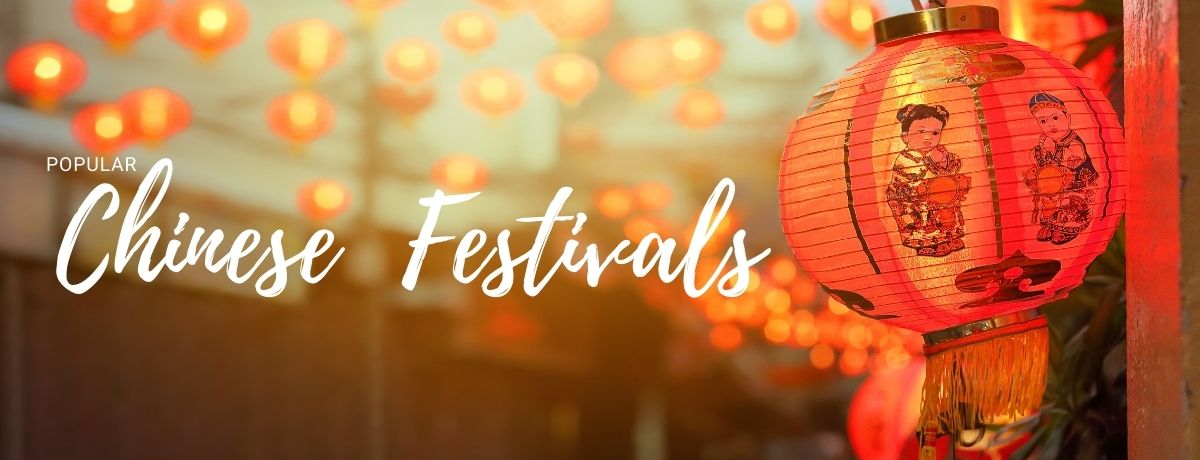
Chinese Festivals
China is a country rich in history, traditions, and cultural celebrations. One of the best ways to experience the vibrant culture of China is through its numerous festivals. These festivals are deeply rooted in Chinese history and have been celebrated for centuries. From colorful parades to traditional performances, Chinese festivals offer a unique insight into the country’s customs and beliefs. In this blog post, we will take a closer look at some of the most popular Chinese Festivals and what makes them so special.
The Spring Festival (Chinese New Year)
The Spring Festival, also known as Chinese New Year, is the most important festival in China. It marks the beginning of the lunar new year and is celebrated with great enthusiasm and excitement. The festival usually falls between late January and mid-February, depending on the lunar calendar.
History and Traditions
The origins of the Spring Festival can be traced back to the Shang Dynasty (1600 BC – 1046 BC). It was originally a time to honor ancestors and pray for a good harvest. Over time, the festival evolved into a celebration of family reunions and new beginnings.
One of the most iconic traditions of the Spring Festival is the red decorations. Red is considered a lucky color in Chinese culture and is believed to ward off evil spirits. People decorate their homes with red lanterns, couplets, and paper cuttings. Another important tradition is the reunion dinner, where families gather to enjoy a feast of traditional dishes.
Festivities and Activities
The Spring Festival is a time for joy and celebration. During this festival, you can witness colorful parades, dragon and lion dances, and firework displays. The most famous parade takes place in Beijing, where thousands of people line the streets to watch the floats, acrobatic performances, and traditional dances.
Another popular activity during the Spring Festival is the temple fair. These fairs are held in many cities and towns across China and offer a variety of traditional food, handicrafts, and performances. It is also a great opportunity to experience the local culture and interact with the friendly locals.
Table: Traditional Dishes for Chinese New Year
| Dish | Description |
|---|---|
| Dumplings | Symbolize wealth and prosperity |
| Fish | Represents abundance and surplus |
| Nian Gao | A sticky rice cake symbolizing progress and growth |
| Spring Rolls | Symbolize wealth and good fortune |
| Tang Yuan | Sweet glutinous rice balls representing family unity |
The Lantern Festival
The Lantern Festival marks the end of the Spring Festival and is celebrated on the 15th day of the first lunar month. It is believed that this festival originated during the Han Dynasty (206 BC – 220 AD) as a way to worship the gods and pray for good luck and blessings.
History and Traditions
The Lantern Festival is closely associated with the legend of the Jade Emperor, who is believed to control the fate of mortals. According to the legend, the emperor was so impressed by the beauty of the lanterns that he ordered his people to light lanterns every year on the 15th day of the first lunar month.
One of the most popular traditions of the Lantern Festival is the lighting of lanterns. People decorate their homes and streets with colorful lanterns of different shapes and sizes. Another tradition is solving riddles written on lanterns, which is believed to bring good luck and intelligence.
Festivities and Activities
The Lantern Festival is a visual feast with its vibrant lantern displays and performances. In addition to the traditional lanterns, you can also see lanterns in the shape of animals, plants, and even famous landmarks. The festival also features lion dances, dragon dances, and other cultural performances.
One of the highlights of the Lantern Festival is the Yuanxiao, or glutinous rice ball, which is a traditional dessert served during this festival. These sweet rice balls are said to symbolize family unity and happiness. Another popular activity is the release of sky lanterns, where people write their wishes on the lanterns before releasing them into the night sky.
List: Famous Lantern Festivals in China
- Pingxi Sky Lantern Festival in Taipei, Taiwan
- Zigong Lantern Festival in Sichuan, China
- Yanshui Beehive Fireworks Festival in Tainan, Taiwan
- Harbin Ice and Snow Festival in Heilongjiang, China
- The Lantern Festival at the Forbidden City in Beijing, China
The Dragon Boat Festival
The Dragon Boat Festival, also known as Duanwu Festival, is celebrated on the 5th day of the 5th lunar month. It is believed that this festival originated during the Warring States Period (475 BC – 221 BC) as a way to honor Qu Yuan, a famous poet and minister who drowned himself in the Miluo River to protest against political corruption.
History and Traditions
The main tradition of the Dragon Boat Festival is the dragon boat race, where teams compete to row their boats to the beat of drums. This tradition is said to originate from the local fishermen’s attempt to save Qu Yuan’s body from being eaten by fish. Other traditions include eating Zongzi, a pyramid-shaped rice dumpling wrapped in bamboo leaves, and hanging calamus and wormwood leaves on doors to ward off evil spirits.
Festivities and Activities
The Dragon Boat Festival is a time for celebration and remembrance. In addition to the dragon boat races, you can also witness traditional performances such as lion dances, drumming, and acrobatics. Many cities also hold cultural fairs where you can learn about the history and traditions of the festival.
One of the most interesting activities during the Dragon Boat Festival is the making of Zongzi. This involves wrapping glutinous rice with different fillings such as pork, red bean paste, or dates in bamboo leaves and steaming them. It is a fun and delicious activity that you can participate in with your family and friends.
Table: Different Types of Zongzi
| Type | Description |
|---|---|
| Cantonese Zongzi | Filled with pork, salted egg yolk, and mushrooms |
| Shanghai Zongzi | Filled with red bean paste and sticky rice |
| Taiwanese Zongzi | Filled with peanuts, dried shrimp, and pork belly |
| Hakka Zongzi | Filled with mung beans, dried shrimp, and pork belly |
| Beijing Zongzi | Filled with jujube paste and chestnuts |
The Mid-Autumn Festival
The Mid-Autumn Festival, also known as the Moon Festival, is celebrated on the 15th day of the 8th lunar month. It is a time to celebrate the harvest and give thanks for the abundance of food. This festival has been celebrated since the Tang Dynasty (618 AD – 907 AD) and is closely associated with the legend of Chang’e, the goddess of the moon.
History and Traditions
The main tradition of the Mid-Autumn Festival is the eating of mooncakes, which are round pastries filled with sweet or savory fillings. These cakes are said to symbolize reunion and completeness. Another important tradition is the giving of mooncakes and other gifts to family and friends as a way to express love and gratitude.
Another popular tradition of the Mid-Autumn Festival is the worship of the moon. People offer fruits, incense, and other offerings to the moon as a way to pray for good luck and blessings. In addition, lanterns are also lit to guide the goddess Chang’e back to earth.
Festivities and Activities
The Mid-Autumn Festival is a time for family gatherings and feasting. Families come together to enjoy a delicious meal and admire the full moon. In many cities, you can also witness colorful lantern displays and cultural performances such as dragon dances and traditional music.
One of the most unique activities during the Mid-Autumn Festival is the making of mooncakes. This involves creating intricate designs on the cakes using different molds and fillings. It is a fun and creative activity that you can try with your family and friends.
List: Popular Mooncake Fillings
- Lotus Seed Paste
- Red Bean Paste
- Five Kernel (a mixture of five types of nuts and seeds)
- Salted Egg Yolk
- Green Tea Paste
The Qingming Festival (Tomb-Sweeping Day)
The Qingming Festival, also known as Tomb-Sweeping Day, is celebrated on the 15th day after the Spring Equinox. It is a time to pay respects to ancestors and honor their memory. This festival has been celebrated since the Zhou Dynasty (1046 BC – 256 BC) and is deeply rooted in Chinese beliefs about the afterlife.
History and Traditions
The main tradition of the Qingming Festival is tomb-sweeping, where families visit the graves of their ancestors to clean and offer sacrifices. This is believed to bring good luck and blessings to the deceased. Another important tradition is flying kites, which is said to help communicate with the spirits of the dead.
In addition, people also burn paper offerings such as money, clothes, and even cars, as a way to provide comfort and luxury to their ancestors in the afterlife. It is also a way to show filial piety and respect for one’s elders.
Festivities and Activities
The Qingming Festival is a time for reflection and remembrance. In addition to tomb-sweeping, you can also witness traditional performances such as dragon and lion dances, as well as cultural fairs where you can learn about the customs and traditions of the festival.
One of the most interesting activities during the Qingming Festival is kite-flying. This involves flying kites with different designs and shapes, such as dragons, butterflies, and birds. It is a fun and colorful activity that you can enjoy with your family and friends.
Table: Paper Offerings for Ancestors
| Offering | Description |
|---|---|
| Paper Money | To provide wealth in the afterlife |
| Paper Clothes | To provide clothing in the afterlife |
| Paper Houses | To provide shelter in the afterlife |
| Paper Cars | To provide transportation in the afterlife |
| Paper Electronics | To provide entertainment in the afterlife |
Conclusion
Chinese festivals offer a unique opportunity to experience the rich history and traditions of China. From the vibrant parades and performances to the delicious traditional dishes, these festivals are a true celebration of Chinese culture. So, if you ever get the chance to visit China, make sure to plan your trip around one of these festivals for an unforgettable experience.










